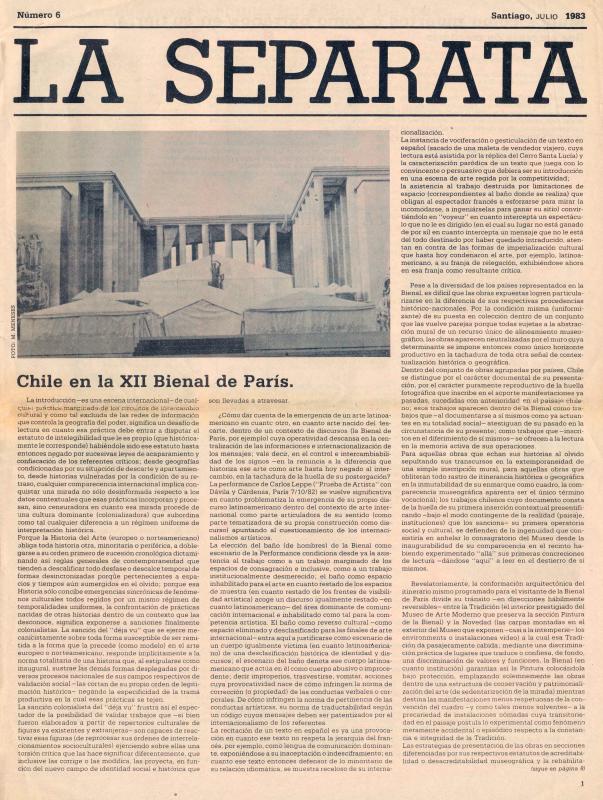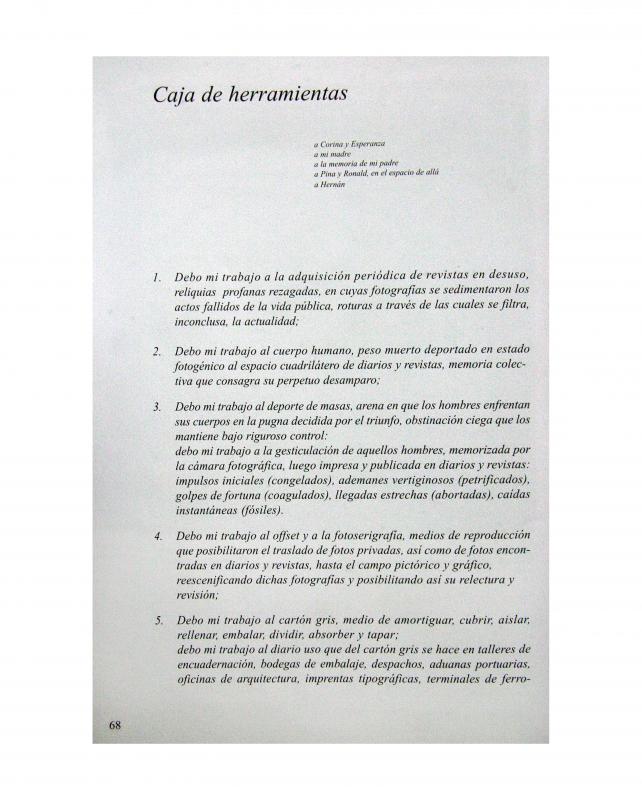The exhibition Cuatro artistas chilenos en el CAYC de Buenos Aires: Díaz, Dittborn, Jaar, Leppe was held at the CAYC (Centro de Arte y Comunicación) in Buenos Aires in 1985. The four participating artists were Gonzalo Díaz (b. 1947), Eugenio Dittborn (b. 1943), Alfredo Jaar (b. 1956), and Carlos Leppe (1952–2015). The exhibition was co-curated by the theorist and cultural critic Nelly Richard (b. 1948) and Jorge Glusberg (1932–2012), the founder and director of the CAYC. This exhibition was one of a number of other overseas events in which Chilean artists participated and Richard played a key role, including the unofficial submission to the 12th Paris Bienniale (1982) and the 5th Biennale of Sydney. [See the ICAA Digital Archive for "Chile en la XII Bienal de París" by Nelly Richard (doc. no. 734895)].
Dittborn created the genre known as Pinturas aeropostales in 1984, painting on large sheets of fabric that were then folded and tucked into envelopes that are also part of the work. When the envelope is ready the painting is mailed to the exhibition site, where it is unfolded and hung on the wall. The envelopes are exhibited along with the paintings to show evidence of the mailing process: the stamps, recipient’s address, and return address. The creases that form a grid of rectangles on the fabric and the lack of a frame are two characteristics that set this genre apart from traditional painting. Airmail paintings usually consist of screenprints from newspapers, magazines, comics, drawing manuals, and children’s drawings. They can include faces and a wide range of iconographies. Fabric can overlap and be patched with seams. [For information about his work with images, written by the author, see "Caja de herramientas" (doc. no. 732125)].
Having theorized at length about Chilean art, Richard notes that the grid of rectangles in these airmail paintings evokes the idea of cartography and thus the association between exploration and conquest. These pieces go beyond reproduction techniques used in industrial societies via manual labor. They also provide space for marginalized people by depicting the faces of criminals, prostitutes, and Native people, challenging the traditional pictorial discourse and its Eurocentric approach. Richard’s reflections are part of her critical reading of an art that seeks to have a powerful impact on society.
Richard originally wrote this essay for an exhibition of Dittborn’s works at the George Paton Gallery in Melbourne, Australia (June 1985). She recycles it here and notes that, in this new exhibition, “the Argentinean recipient’s reading is superimposed on the Australian’s; that multiplication of geographic and cultural perspectives is prompted by the painting’s nomadic nature.”


